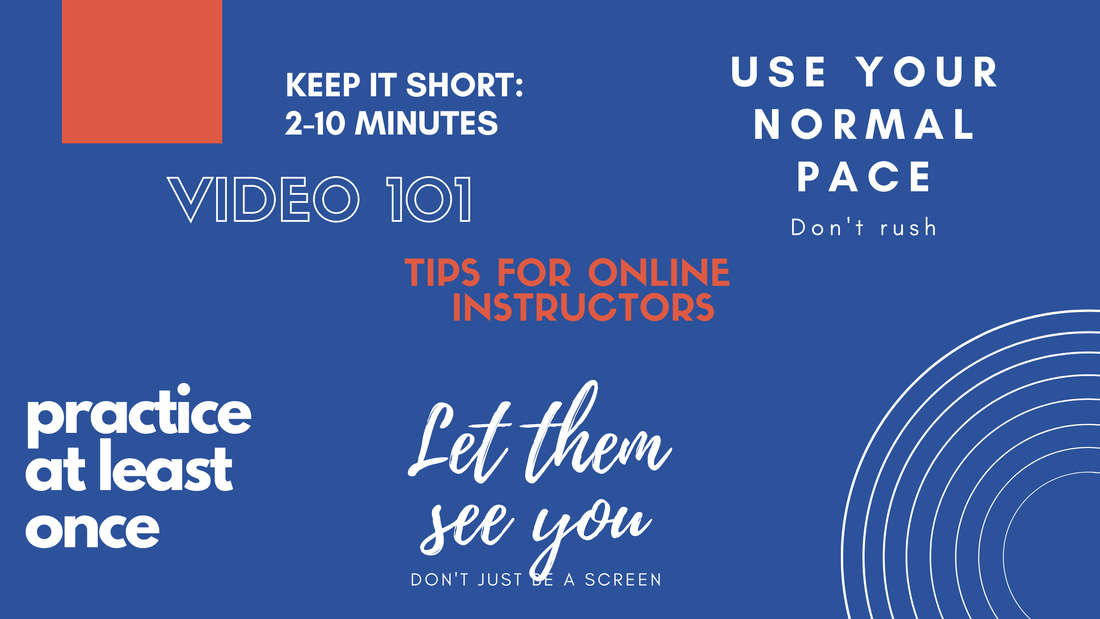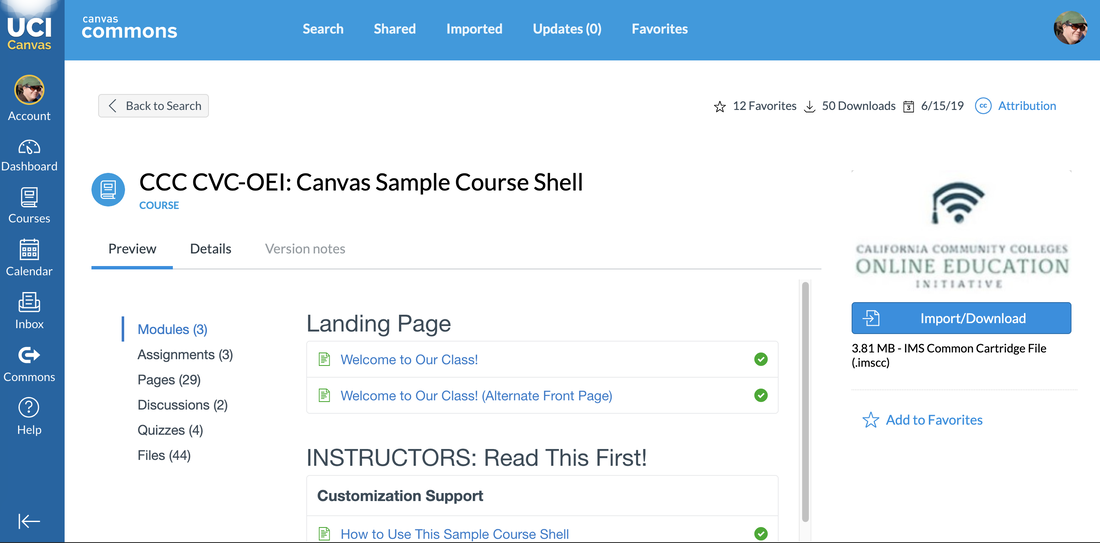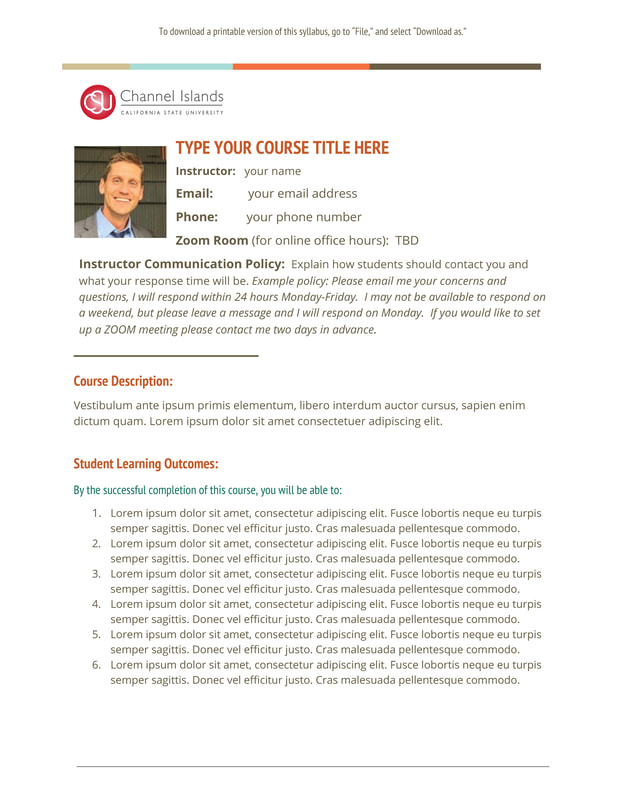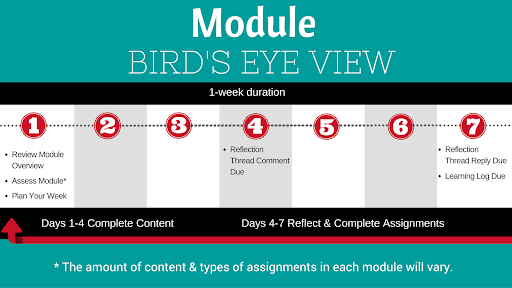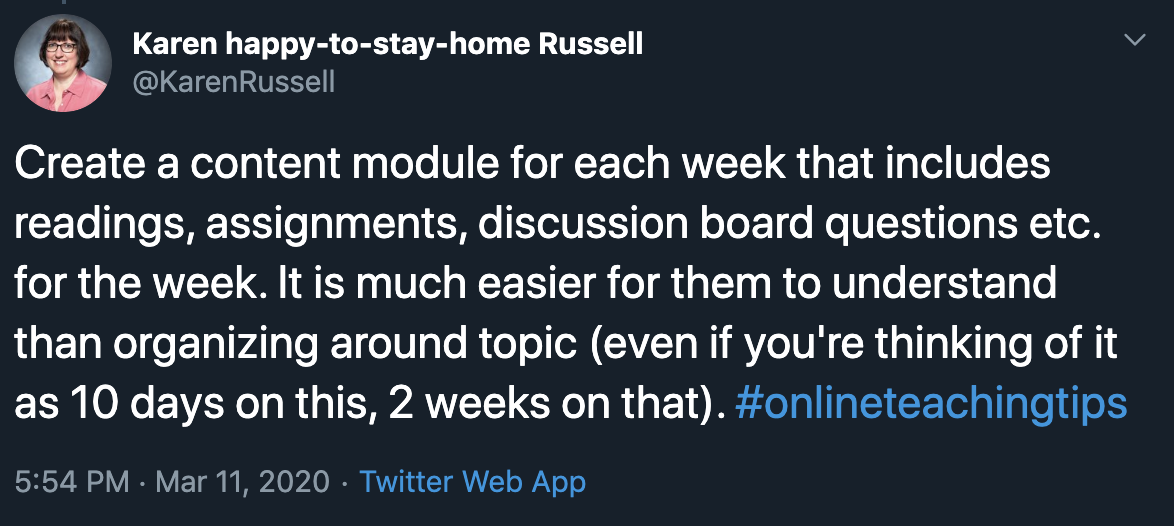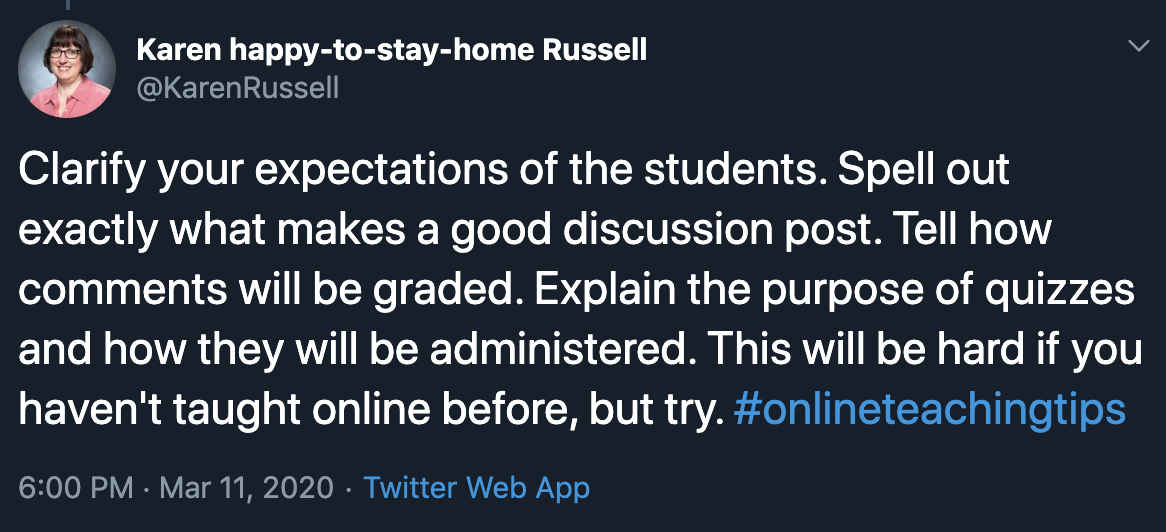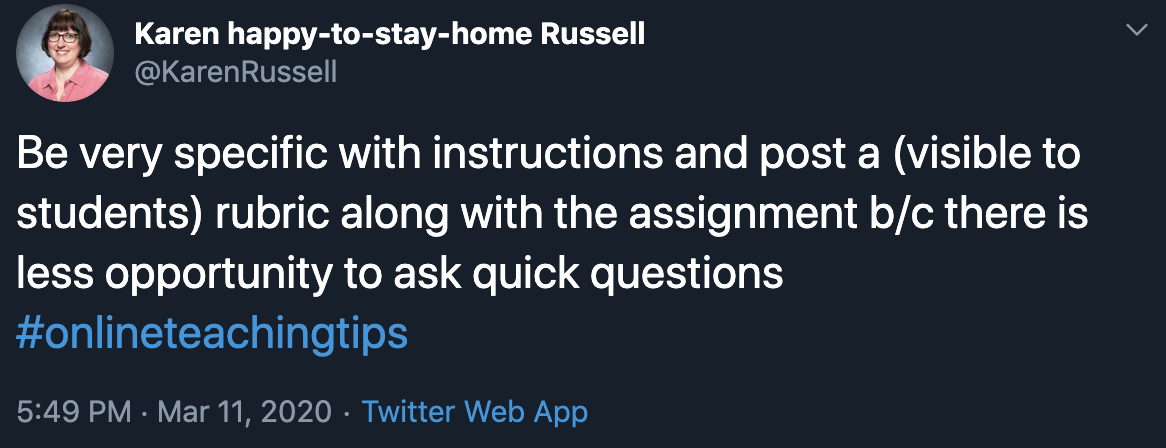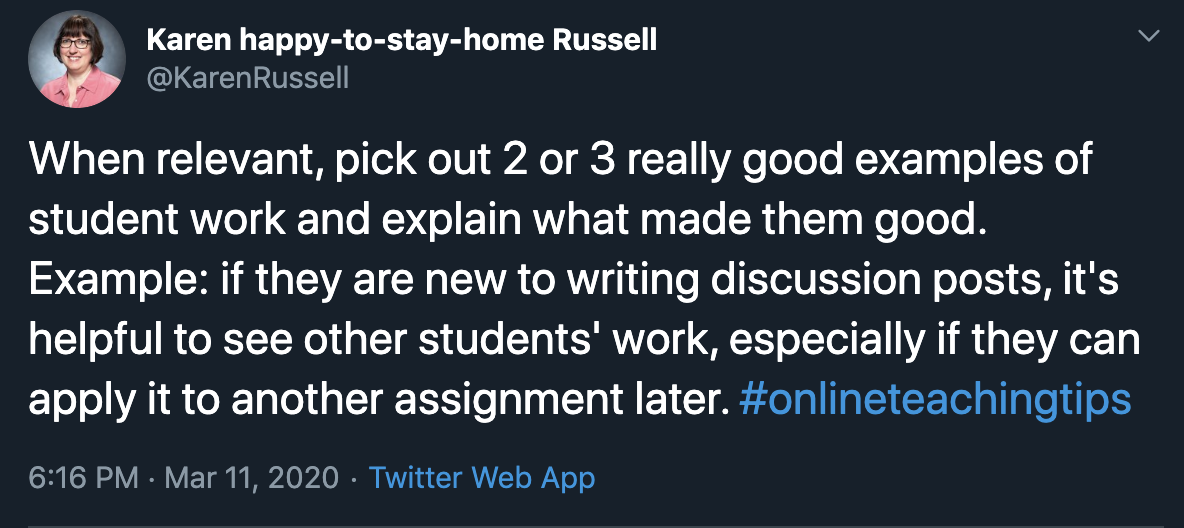Why?
Without the structure of an in-person class and teacher, it is very easy for students to get lost and confused. Our studies suggest that confusion about assignments, deadlines, and requirements is a major challenge for online students, and that clear and well-organized course materials can result in higher grades, especially for underrepresented minorities. See our research papers on course design.
How?
- Segment course content and learning material into meaningful chunks (e.g., clearly labelled folders, modules, or webpages). Use headings and subheadings to enhance students' understanding of the course structure and main topics. Be consistent!
- Provide detailed guidance to help students navigate the course, including specific instruction on how to get started and use different materials. For example, if students need to upload materials, review each other's assignments, or join discussion groups, show them exactly how to do so (with detailed explanation, images, or videos).
- Explain course policies in detail. Is late work accepted? Under what conditions? What should students do if they are ill? How can they challenge a grade?
Resources
|
1. Course "shells" or templates for learning management (LMS) sites provide a way to get started. See the examples on Canvas Commons if you use Canvas, you can search by your institution or use the resources available from CVC-OEI.
|
2. Examples of clear, well organized syllabi from CSU Channel Islands are here. Note especially the discussions of online readiness, how to use technology tools, online etiquette, and the clear explanation of the course design. In addition, a clear graphic (sample 3) shows students how to navigate a typical module/topic/week.
Don't forget accessibility
|
More Resources
- The Chronicle of Higher Education "How to be a Better Online Teacher" is filled with practical suggestions
- Be cognizant that students may not have high-speed stable Internet access. Consider recording lectures on Zoom (even if held live), YuJa, Google Slides, or PowerPoint so students can learn asynchronously and posting for those who can't attend live or want to review material later
- Learn pro tips for the Canvas LMS like how to add a suggestion box, change labels on late work, create soft due dates
